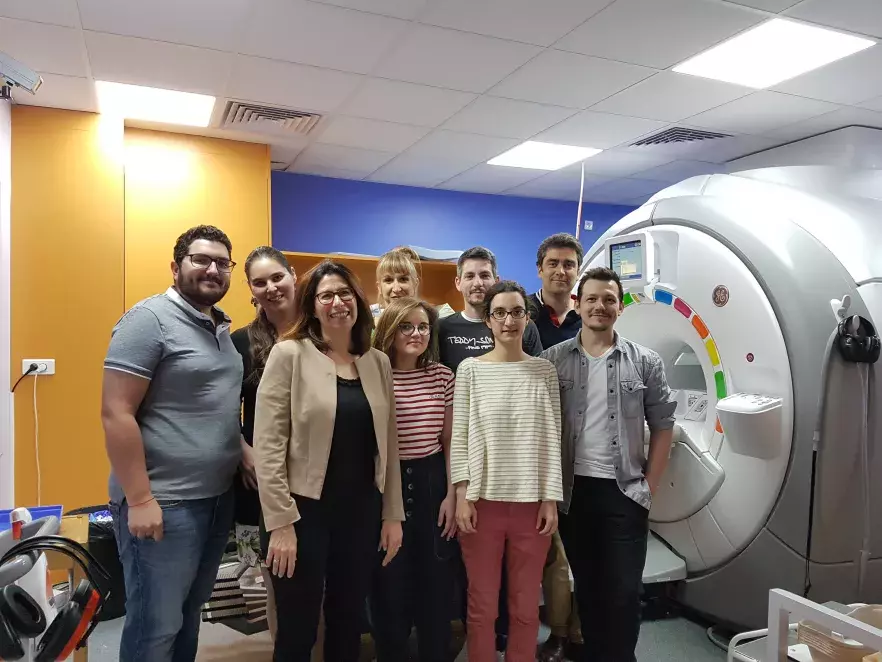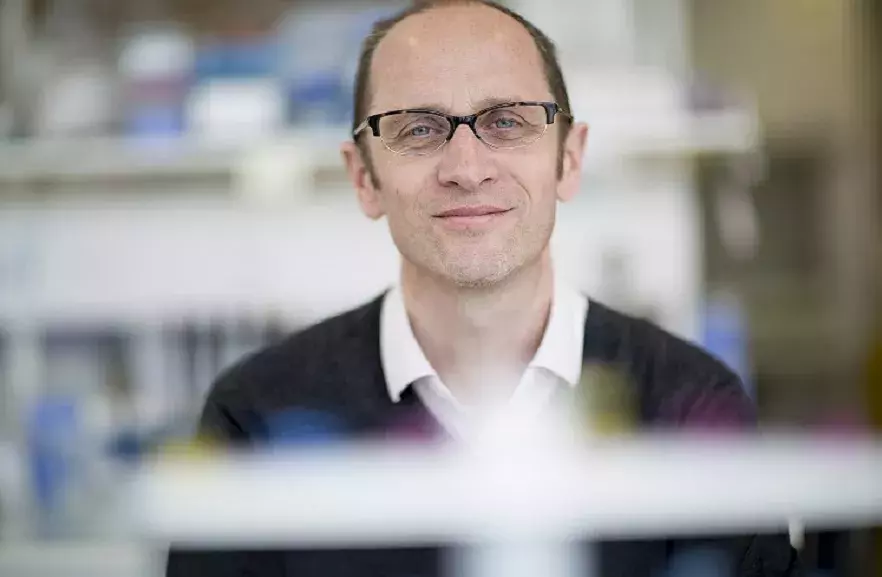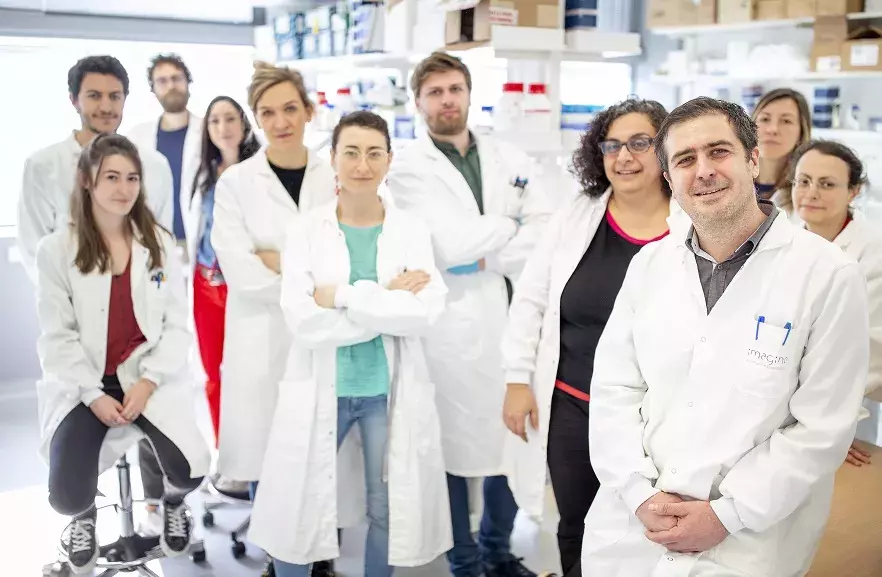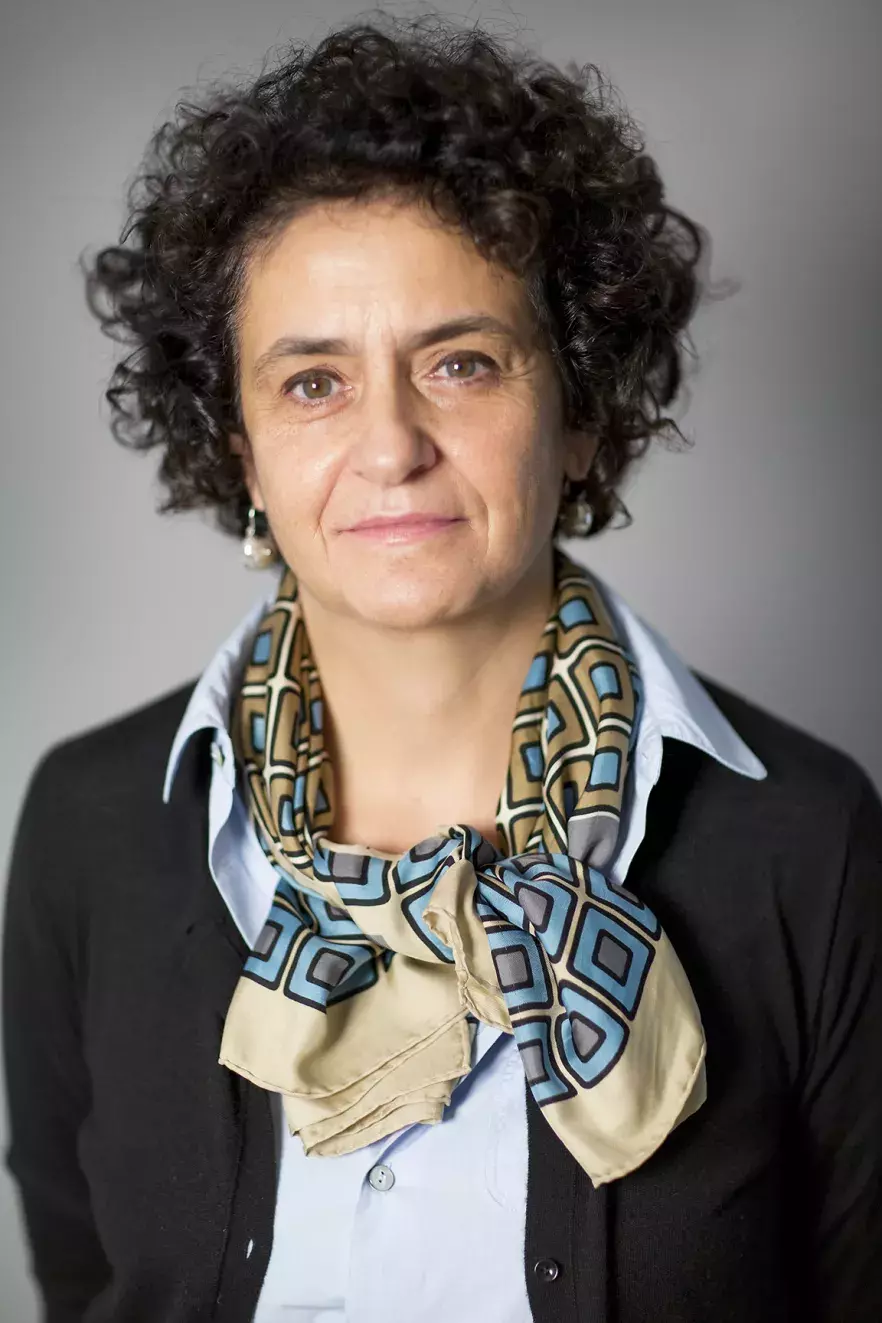Published on 30.05.2022
Image@Imagine Laboratory, directed by Pr. Nathalie Boddaert
The "Image@Imagine" laboratory, directed by Pr. Nathalie Boddaert, is both a brain imaging research team and a paediatric imaging platform.
Over the last decades, rapid progress in the development of MRI imaging data has provided a large and complex amount of data. The Image@Imagine laboratory, associated with the Imagine Institute and directed by Pr Nathalie Boddaert, uses different methods to explore all this information provided by the new MRI sequences. A lot of clinical research using MRI as a therapeutic evaluation tool is being conducted in paediatric brain tumours in particular. The laboratory also uses anatomical and functional imaging in epilepsy and developmental disorders in children to better understand the pathophysiology and to have an imaging marker, particularly in autism.
This laboratory is also interested in transcranial magnetic stimulation (TMS), a neural stimulation technique using electrodes placed on the scalp, which makes it possible to transiently interfere with neural activity in a target region. The researchers were able to show that, following the inhibition of neural activity in the right superior temporal sulcus (STS) by transcranial magnetic stimulation, healthy volunteers observing a social interaction scene tended to direct their gaze less towards the eyes of the characters. Socially relevant information is processed in this brain structure known as the 'social brain'. Abnormalities in this structure have been consistently described in autism spectrum disorders (ASD). Therefore, in collaboration with the Brain Institute's TMS platform, researchers are currently investigating the use of this technique to modulate the neural activity of the STS in ASD patients, with the aim of interfering with gaze processing and improving social behaviour, which could support the use of TMS as a novel therapeutic intervention in ASD.
Over the past ten years, the laboratory has also conducted research on social perception processes using eye-tracking, a method that allows real-time tracking of the gaze of people in different social contexts. The laboratory has thus set up a research platform dedicated to the social perception of children and adults with typical to atypical development. The first stage of this research consisted in generating very sensitive stimuli: film extracts featuring an interaction between several people. Using this eye-tracking protocol, the researchers assessed social perception in a large sample of children and adults, with typical development and different developmental pathologies, creating a large database that is very useful for better understanding social disorders.
The "Neurogenetics and Neuroinflammation" laboratory, directed by Yanick Crow
This laboratory started its activity at the Institut Imagine with an expertise on a rare inflammatory neurological disease, called Aicardi-Goutières syndrome (AGS). The clinical and genetic study of this severe pathology has allowed the description of the intracellular mechanisms at the origin of the auto-inflammation induced by nucleic acids and the demonstration of the pathogenic potential of the type I interferon pathway in human health.
Indeed, these inflammatory molecules are also involved in certain autoimmune diseases, in particular systemic lupus erythematosus and dermatomyositis. The laboratory's findings have led to the definition of a new group of primary immune deficiencies: type I interferonopathies. These are single-gene disorders associated with activation of the type I interferon signalling pathway following abnormal detection, inappropriate stimulation or misregulation of the interferon pathway. Resistant to conventional treatments, the severity and morbidity of interferonopathies implies an urgent need for new therapeutic approaches.
In this respect, the laboratory's scientific advances suggest that it is possible to block nucleic acid-induced inflammation in patients. Beyond their interest for clinical applications, these advances are very important for our understanding of the mechanisms of distinction between self and non-self and of antiviral immunity.
The "Translational Research in Neurological Diseases" laboratory, headed by Edor Kabashi
The laboratory works on neurological diseases ranging from amyotrophic lateral sclerosis (ALS) - or Charcot's disease - to rare epilepsies. ALS is a serious neurodegenerative disease leading to progressive muscle paralysis. Rare epilepsies are not only accompanied by seizures, but also by intellectual and cognitive impairments, behavioural problems and, in some cases, motor disorders and a high risk of sudden and unexpected death. Although these two diseases do not share the same clinical course and are caused by different genetic mutations, they have in common a defect in the excitability of neurons in a brain structure called the motor cortex. Using an approach based on state-of-the-art molecular and physiological technologies, the laboratory team is seeking to define the common pathogenic mechanisms that lead to altered excitability in specific subsets of neurons associated with these disorders. It has also developed simple models of these disorders, in this case zebrafish larvae, to study gene function, from physiology and neuronal identity to finding actionable therapeutic targets. The researchers thus have numerous links with the clinical teams of the Hôpital Necker Enfants Malades to better accelerate translational research.
"Genetics of neurodevelopmental disorders", directed by Vincent Cantagrel
With a prevalence of up to 3% of the population, neurodevelopmental disorders account for 10% of total health care costs in most Western countries. Understanding the biological basis of these diseases is therefore a major medical and socio-economic challenge. In this context, the laboratory is interested in the genetics and molecular biology involved in the development of the human brain and in particular the cerebellum. The aim is to better understand the diseases linked to it: intellectual disability, congenital ataxias, autism spectrum disorders, language disorders, etc., in order to improve both the diagnosis and the treatment of patients. Over the last decade and using state-of-the-art genetic and genomic technologies, the laboratory headed by Vincent Cantagrel has characterised numerous chromosomal abnormalities and pathogenic mutations responsible for several of these neurodevelopmental disorders. In order to assess the functional impact of the identified variants, his team uses several complementary approaches based on models such as neural cells derived from induced human stem cells (iPS cells) or zebrafish. The laboratory is closely linked to the neurodevelopment functional unit of the Necker-Enfants-Malades Hospital (APHP) and two rare disease reference centres: the Malformation and congenital diseases reference centre and the Intellectual deficiencies of rare causes reference centre. This multidisciplinary base allows the laboratory to develop highly translational research projects.
The "Genetics and development of the cerebral cortex" laboratory, directed by Alessandra Pierani.
Our cognitive functions are based on neuronal circuits that are formed in the early stages of embryonic development. The 'Laboratory of Genetics and Development of the Cerebral Cortex' is particularly interested in the role of so-called 'transient signaling' neurons, which migrate into the brain and coordinate the construction of neuronal circuits, before disappearing at the end of development. The team's researchers have shown that disturbances in these dynamics, linked to genetic anomalies, can have profound repercussions on the establishment of neuronal circuits, leading to neurological and psychiatric diseases. In this context, the laboratory's lines of research are to study at the molecular level the role of transient signalling neurons as organisers during the development of the neocortex; to determine how the acquisition of these neurons in mammals has contributed to the evolution of the necortex; and finally to better understand how changes in their migration rate, number and survival affect neural circuits leading to pathological states.





